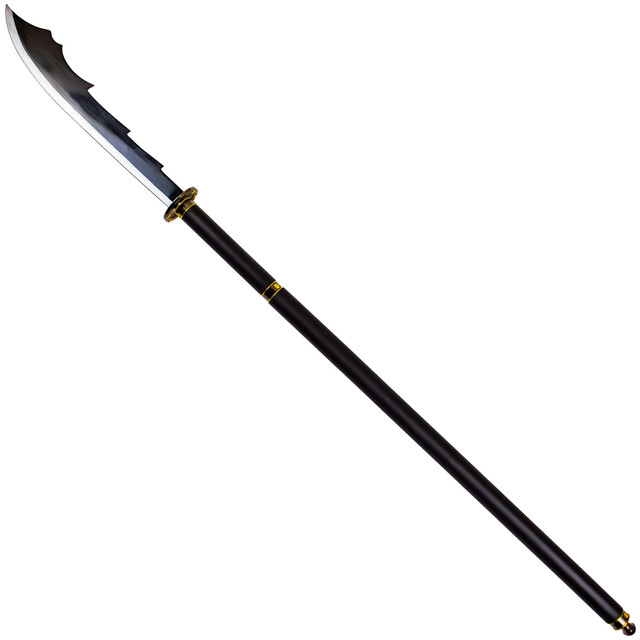Medieval Swords: Types and Their Unique Features
Posted by SwordsSwords on Jun 6th 2024
Medieval swords hold a special place in history, representing the artistry and combat skills of ancient warriors. These swords come in various shapes and sizes, each designed for specific purposes. Let’s explore the different types of medieval swords and what makes each unique.
1. Medieval Arming Sword
The arming sword, often seen as the quintessential knightly weapon, was a staple on the battlefield during the Middle Ages. It balanced both offense and defense, allowing knights to wield a shield or secondary weapon in the other hand.
Features:
- Single-Handed: Designed to be wielded with one hand.
- Straight Blade: Typically about 28 to 32 inches long.
- Double-Edged: Sharp on both sides for versatile cutting and thrusting.
Usage:
The arming sword was a common weapon for knights during the Middle Ages. It was lightweight and easy to maneuver, making it ideal for close combat.
2. Longsword
Known for its versatility and effectiveness, the longsword became prominent in the late medieval period. It was favored by knights and soldiers for its adaptability in both offensive and defensive maneuvers.
Features:
- Two-Handed Grip: Allows for more power and control.
- Long Blade: Usually 33 to 45 inches long.
- Double-Edged: Effective for both slashing and thrusting.
Usage:
The longsword, also known as the hand-and-a-half sword, was popular during the late medieval period. Its extended grip offered the option of using one or two hands, providing flexibility in battle.
3. Claymore
The claymore is a symbol of Scottish heritage and strength. This large, two-handed sword was wielded by Highland warriors, making a significant impact in battles with its impressive size and reach.
Features:
- Large Two-Handed Sword: Often over 55 inches long.
- Distinctive Crossguard: Angled or slightly forward-swept quillons.
- Double-Edged Blade: Capable of powerful cuts.
Usage:
The claymore was a Scottish sword used in the Highlands during the 15th and 16th centuries. Its size and weight made it a formidable weapon on the battlefield, capable of delivering devastating blows.
4. Falchion
The falchion stands out among medieval swords due to its distinctive, curved blade. It combined the weight and power of an axe with the versatility of a sword, making it a favorite among various classes of warriors.
Features:
- Single-Edged Blade: Curved and heavy.
- Shorter Length: Around 30 inches long.
- Thick Spine: Adds weight and power to the cut.
Usage:
The falchion was a versatile weapon used by both knights and common soldiers. Its heavy blade could easily slice through armor, making it a practical tool for various combat scenarios.
5. Greatsword
The greatsword is known for its imposing size and overwhelming power. These massive swords were used to break through enemy lines, causing chaos and disrupting formations with their sheer weight and reach.
Features:
- Massive Two-Handed Sword: Length can exceed 60 inches.
- Wide Blade: Broad and heavy.
- Double-Edged: Effective for cutting and thrusting.
Usage:
Greatswords were used primarily during the Renaissance period. Their sheer size and weight made them intimidating weapons, often used to break through enemy lines and disrupt formations.
6. Rapier
The rapier is renowned for its elegance and precision. Unlike the broad, heavy blades of other medieval swords, the rapier was designed for speed and accuracy, making it a preferred weapon for dueling and self-defense.
Features:
- Slim, Pointed Blade: Designed for thrusting.
- Complex Hilt: Provides hand protection.
- Lightweight: Easy to wield with one hand.
Usage:
The rapier became popular in the late Renaissance, especially for civilian self-defense and dueling. Its design focused on speed and precision rather than brute force.
7. Bastard Sword
The bastard sword, or hand-and-a-half sword, offered a unique blend of versatility and power. Its design allowed for both one-handed and two-handed use, adapting to various combat situations.
Features:
- Versatile Grip: Can be used with one or two hands.
- Medium-Length Blade: Around 40 inches.
- Double-Edged: Suitable for both cutting and thrusting.
Usage:
The bastard sword, also known as the hand-and-a-half sword, offered flexibility in combat. Its design allowed for quick transitions between different fighting styles.

Conclusion
Medieval swords are more than just weapons; they are pieces of history that reflect the skills and strategies of ancient warriors. Consider buying from swordsswords.com Because each type of sword has its unique features and specific uses, making them essential tools in medieval warfare. Whether you’re a history enthusiast or a collector, understanding these different types of medieval swords gives a deeper appreciation for their craftsmanship and significance.

